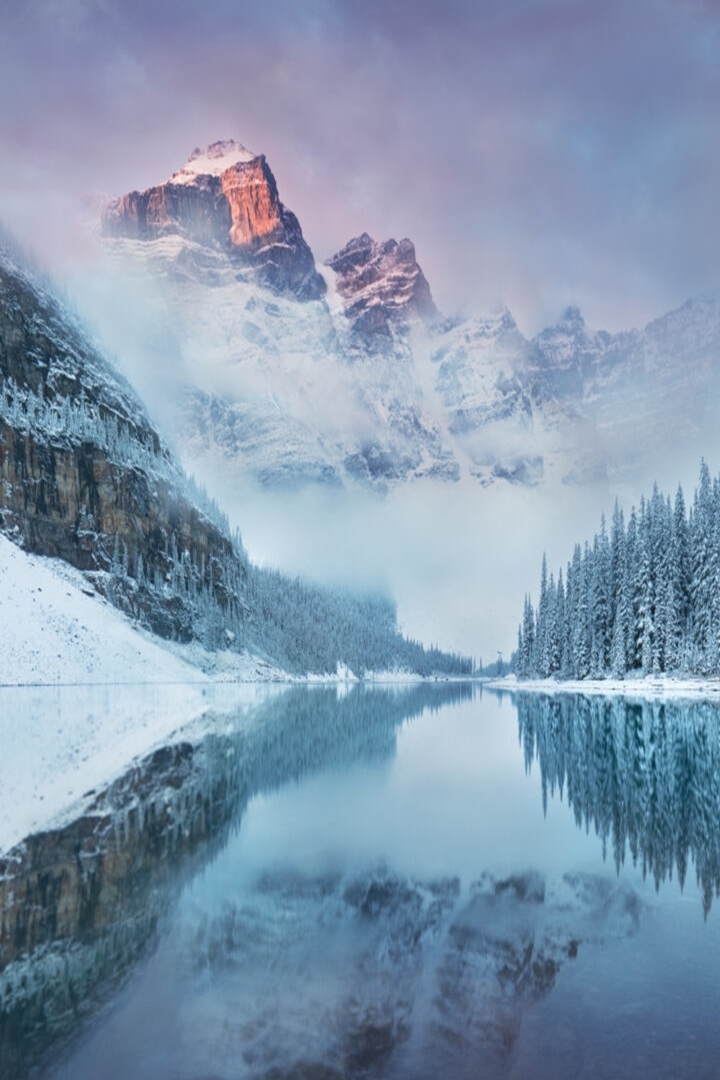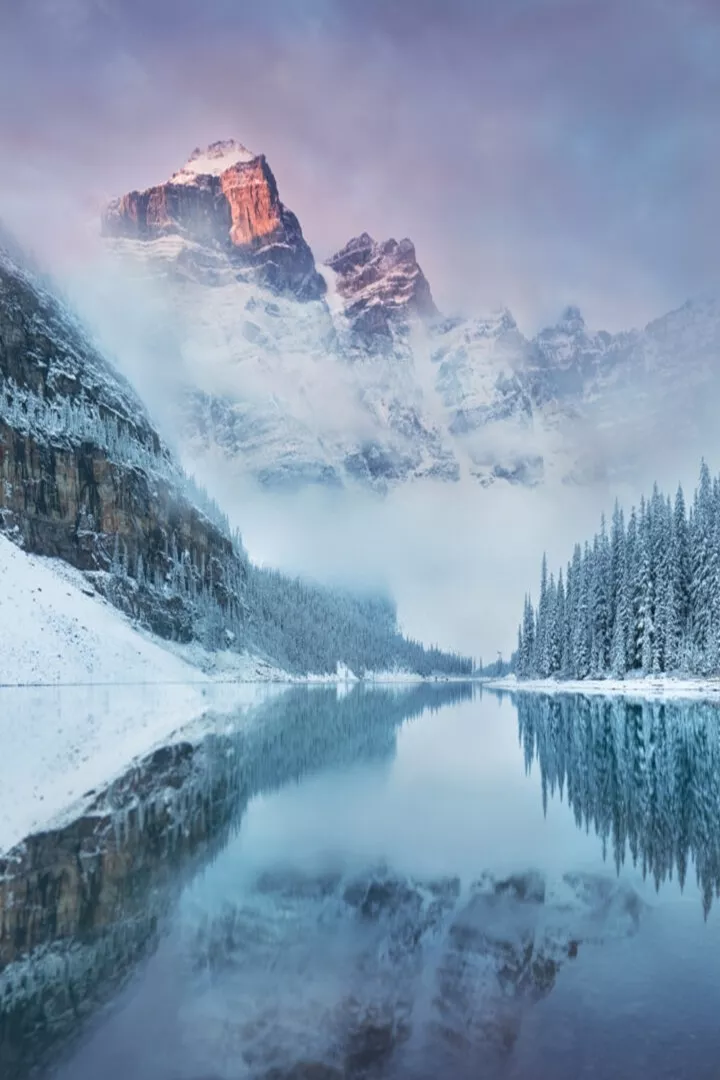

Fantastic Snow and Ice Photo Opportunities In Banff
with bluebird skies, brilliantly white mountain-top glaciers, and crystal-clear ice.


Abraham Lake
For Those Frozen Bubbles


Mt. Rundle, Finding The Light In A Complex Landscape
Mountains make for unpredictable light and shadows.


Vermilion Lakes
Use Water For An Interesting Foreground
Moraine Lake
Capture Winter’s Short Days
Ice Castle Magic
At Lake Louise
Johnston Canyon
A Summer Favorite Seen In A New Way
Lake Minnewanka
Snow and ice accumulate in interesting layers, just like sedimentary rocks do.
Alpenglow From Sulphur Mountain
Sometimes Mother Nature is more generous to photographers than seems possible.
अगला देखें
तस्वीर: MARK UNRAU / ROCKY MOUNTAIN PHOTO ADVENTURES
In at least one of your photos, try to include something that will show the scale of the bubbles.
It’s amazing how big they can get, and also how deep they go.
Also, any kind of traveling on ice, whether it’s walking, skating, skiing, or something else, always carries some risk.
Be sure to follow these safety tips from Parks Canada.
तस्वीर: MARK UNRAU / ROCKY MOUNTAIN PHOTO ADVENTURES
Bring your tripod. Use the self-timer or a remote so your camera will be as still as possible when the shutter opens. It’s surprising how much this can sharpen a picture.
तस्वीर: MARK UNRAU / ROCKY MOUNTAIN PHOTO ADVENTURES
Unrau recommends finding an interesting foreground to make a good shot better. “I look for open water, where you can capture the reflection of the mountains,” he says.
Keep your camera lens clean. You may walk through falling snow or find moisture condensing on the lens, just as it does on your glasses. Bring the appropriate cleaning cloths with you.
तस्वीर: TRUENORTHSTRONGSTUDIOS / SHUTTERSTOCK
The shortest day of the year in Banff is less than eight hours long. You don’t have to get up super early to be in place before sunrise.
Dress for winter. Overdress! Unlike cross-country skiing or skating on Lake Louise, photography involves a lot of being still.
Keep your extremities warm, as well as your core.
Wear warm, waterproof boots, a long coat or parka, mittens, a scarf, and a warm toque (hat).
We’ve reviewed the best heated gloves, as well, if you want some extra warmth while you’re getting the perfect shot.
तस्वीर: SURANGALK / SHUTTERSTOCK
Stay at the Chateau or another Lake Louise hotel and get to the lake well before sunrise.
The “no one’s there” part is challenging at one of Canada’s most notable photo hotspots.
तस्वीर: GLOBE GUIDE MEDIA INC / SHUTTERSTOCK
Kim Logan of Banff and Lake Louise Tourism points out that Johnston Canyon, a very popular summer hike, is also a dramatic setting for winter photography. The canyon walls become covered in blue-white ice, completely changing the look of the place.
Safety first. To hike in icy places like this, use the proper gear, especially sturdy ice cleats for your boots.
Check the Parks Canada trail report for this favorite year-round trail.
You may see bands of white and blue that your camera can capture.
Lake Minnewanka is a good place to explore. The wind sweeps down this long, narrow lake, sometimes leaving it clear enough to reflect the mountains and sky.
Pro Tip: Did you know you can change the exposure on your phone camera? On most smartphones, aim the camera and then hold your finger on the screen.
This usually focuses the camera on the place you’ve put your finger, and it also brings up an image of the sun with a slider.
Move the slider to let in more light if you want to brighten the shot.
तस्वीर: NICEPIX / SHUTTERSTOCK
Alpenglow is a soft, pink light that appears to be coming from inside the mountains themselves. How it’s created is a little complicated, but it’s best in the winter and happens just before sunset.
Alpenglow and other light effects can very quickly change. Another valuable pointer from Unrau: Know your equipment. Learn to set up fast. When you can give your shot the full attention it deserves, you’ll be rewarded with better pictures.